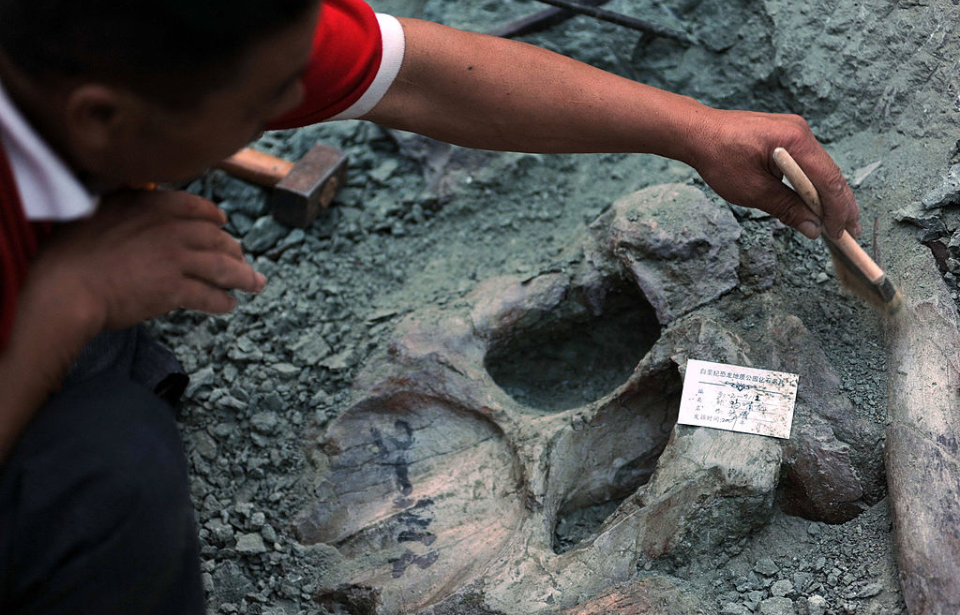Researchers in Spain have identified fossils unearthed over a decade ago as belonging to a newly-discovered species of spinosaurid. In a study published in the journal Scientific Reports, the team, led by Andrés Santos-Cubedo, reveal the dinosaur dates back to the Early Cretaceous period, between 127-126 million years ago.

The study, titled A new spinosaurid dinosaur species from the Early Cretaceous of Cinctorres (Spain), says the new species was discovered in 2011 during an excavation at the Arcillas de Morella Formation in Castellón, Spain. The fossil fragments uncovered include a right jawbone, five vertebrate and a single tooth.
Spinosaurids are characterized by their large bodies and ability to stand on two feet. Largely carnivorous, they were found in Europe, Africa and Asia. This particular specimen has been dubbed Protathlitis cintorrensis and was between 32-36 feet long, with an elongated snout. It had a unique sub-circular depression in its jawbone.
Along with being a new species, it’s also considered a new genus and was the first-known baryonychinae to be unearthed in the Arcillas de Morella Formation. The fossil fragments were examined through phylogenetic analysis, which compared them to other specimens and allowed the team to gain a better understanding of how spinosaurids evolved over time.
The study’s authors believe this species of spinosaurid, as well as the earlier discovery of Vallibonavenatrix, shows the dinosaurs first appeared in Laurasia, in the Northern Hemisphere, during the Early Cretaceous period. Two sub-groups occupied Western Europe, after which the species migrated to other parts of the world, where they diversified.
More from us: Archaeologists Discover Rare 7,000-Year-Old Figurine In Italian Cave
While living in the Iberian peninsula, Protathlitis cintorrensis co-existed alongside other dinosaur species, including Iguanodon bernissartensis and Morelladon beltrani.
